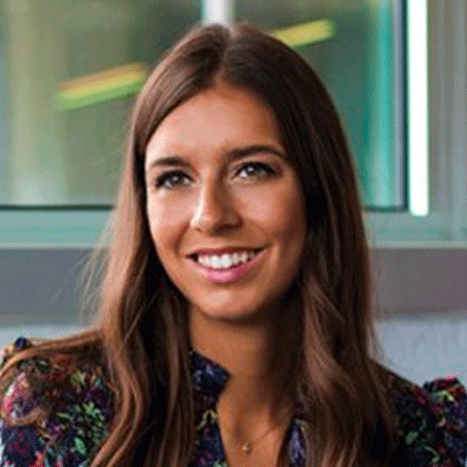This week in Behind Headlines: 180 Seconds in Ad Tech we cover subscription platforms decline in viewers, Google's new update, a B2B company advertising during the Super Bowl, Twitter leading the pack, and Facebook trailing behind.
Hey there! This is Ari at Sharethrough with another episode of Behind Headlines. In this episode I'll be giving you a 180-second recap of what happened the week of January 31st in ad tech. Let’s go!
First thing’s first, subscription streaming services are having difficulty retaining subscribers. According to a report from subscriber measurement company Antenna, people are subscribing to services for “must-see” content, only to cancel their subscription within 6 months. People subscribed en masse to HBO Max for Wonder Woman, or to Disney for Hamilton, but left the platforms shortly after viewing. Although a little more durable, Netflix wasn’t immune to the subscription woes. Netflix maintained it’s subscription rate, but it fell short of its estimated growth, lowering their stocks. Like a double-edged sword, subscription platforms that don’t rely on ads have to create quality content in order to maintain their user base. (Source: Wall Street Journal)
Speaking of CTV, Google recently announced a CTV frequency capping tool for its DSP Display & Video 360 (DV360). Google’s frequency capping worked for YouTube and the YouTube TV app, thanks to Google IDs, but not so much on external platforms. In order to effectively cap ads on different platforms, like Hulu and Roku, Google had to use the IAB standard ID. Frequency capping on CTV can be kind of messy. Roku can cap ads on their Roku DSP, Amazon on Fire TV, however, bigger campaigns that stretch multiple platforms may still overwhelm users with ads and lead to significant ad waste if the same ad is competing against itself across multiple channels. Next thing we know, the same viewer has seen the ad more than twice intended. By better capping the frequency of ads across platforms, advertisers can extend their campaign reach, and viewers avoid ad fatigue. And just in time for the Super Bowl! (Source: Google)
And here’s something we don’t hear about too often, a B2B company advertising during the Super Bowl. Monday.com, a workforce development platform, is spending 10x more than it’s ever spent on a single campaign to advertise during the upcoming Super Bowl. Monday.com plans to support the in-game commercial with various other channels, online and offline, like social media and OOH. To measure the campaign, the commercial is only launching in certain major cities, with the excluded cities acting as control groups. Could this be the beginning of a bigger trend of B2B companies advertising like B2C? (Source: AdExchanger)
Furthermore, social media platforms got their brand safety checked for the third time by the ad agency IPG. Every 6 months, IPG checks the platforms using its Media Responsibility Index (MRI) to look at platforms’ policies and catch any potential hazards or issues. The MRI looks for hate speech, biometric data collection and storage, and misinformation labels, to name a few. So why would social media platforms participate? The ad agency provides a gold star for most improved as a way to incentivize platform changes. Receiving the gold star this year is Twitter! Twitter uses the MRI brand safety checks as a benchmark for what they should be improving. So if Twitter was first, who came last? It was Facebook. Just what Facebook needed amid all its other controversies. Social media platforms are the only ones being checked for now, but IPG plans to extend their MRI to all monetized advertising channels. (Source: Digiday)
And last (oops) but certainly not least, Facebook. While Facebook was deciding what to do with their TikTok clone, Reels, Facebook’s stock dropped more than 25%, mainly because of Apple’s iOS14 and a fleeting user base. And not just that, the privacy changes introduced in iOS14 could cause Facebook a near $10 billion loss. Still, that seems like a drop in the bucket as their ad revenue brought in more than $100 billion in 2021 while Google brought in over $200 billion in revenue from search ads. But was Google affected by Apple’s privacy changes? Not as much as Facebook, where the same prompt to allow tracking between apps doesn’t impede Chrome’s ability to track users between websites. (Source: AdExchanger)
Thanks for tuning in! For more in-depth information or to subscribe to these weekly updates, check out the links in our blog. This has been Ari at Sharethrough for our weekly 180 second-recap in Ad tech. See you next week!
Behind Headlines: 180 Seconds in Ad Tech is a short 3-minute podcast exploring the news in the digital advertising industry. Ad tech is a fast-growing industry with many updates happening daily. As it can be hard for most to keep up with the latest news, the Sharethrough team wanted to create an audio series compiling notable mentions each week.
This week in Behind Headlines: 180 Seconds in Ad Tech we cover subscription platforms decline in viewers, Google's new update, a B2B company advertising during the Super Bowl, Twitter leading the pack, and Facebook trailing behind.
Hey there! This is Ari at Sharethrough with another episode of Behind Headlines. In this episode I'll be giving you a 180-second recap of what happened the week of January 31st in ad tech. Let’s go!
First thing’s first, subscription streaming services are having difficulty retaining subscribers. According to a report from subscriber measurement company Antenna, people are subscribing to services for “must-see” content, only to cancel their subscription within 6 months. People subscribed en masse to HBO Max for Wonder Woman, or to Disney for Hamilton, but left the platforms shortly after viewing. Although a little more durable, Netflix wasn’t immune to the subscription woes. Netflix maintained it’s subscription rate, but it fell short of its estimated growth, lowering their stocks. Like a double-edged sword, subscription platforms that don’t rely on ads have to create quality content in order to maintain their user base. (Source: Wall Street Journal)
Speaking of CTV, Google recently announced a CTV frequency capping tool for its DSP Display & Video 360 (DV360). Google’s frequency capping worked for YouTube and the YouTube TV app, thanks to Google IDs, but not so much on external platforms. In order to effectively cap ads on different platforms, like Hulu and Roku, Google had to use the IAB standard ID. Frequency capping on CTV can be kind of messy. Roku can cap ads on their Roku DSP, Amazon on Fire TV, however, bigger campaigns that stretch multiple platforms may still overwhelm users with ads and lead to significant ad waste if the same ad is competing against itself across multiple channels. Next thing we know, the same viewer has seen the ad more than twice intended. By better capping the frequency of ads across platforms, advertisers can extend their campaign reach, and viewers avoid ad fatigue. And just in time for the Super Bowl! (Source: Google)
And here’s something we don’t hear about too often, a B2B company advertising during the Super Bowl. Monday.com, a workforce development platform, is spending 10x more than it’s ever spent on a single campaign to advertise during the upcoming Super Bowl. Monday.com plans to support the in-game commercial with various other channels, online and offline, like social media and OOH. To measure the campaign, the commercial is only launching in certain major cities, with the excluded cities acting as control groups. Could this be the beginning of a bigger trend of B2B companies advertising like B2C? (Source: AdExchanger)
Furthermore, social media platforms got their brand safety checked for the third time by the ad agency IPG. Every 6 months, IPG checks the platforms using its Media Responsibility Index (MRI) to look at platforms’ policies and catch any potential hazards or issues. The MRI looks for hate speech, biometric data collection and storage, and misinformation labels, to name a few. So why would social media platforms participate? The ad agency provides a gold star for most improved as a way to incentivize platform changes. Receiving the gold star this year is Twitter! Twitter uses the MRI brand safety checks as a benchmark for what they should be improving. So if Twitter was first, who came last? It was Facebook. Just what Facebook needed amid all its other controversies. Social media platforms are the only ones being checked for now, but IPG plans to extend their MRI to all monetized advertising channels. (Source: Digiday)
And last (oops) but certainly not least, Facebook. While Facebook was deciding what to do with their TikTok clone, Reels, Facebook’s stock dropped more than 25%, mainly because of Apple’s iOS14 and a fleeting user base. And not just that, the privacy changes introduced in iOS14 could cause Facebook a near $10 billion loss. Still, that seems like a drop in the bucket as their ad revenue brought in more than $100 billion in 2021 while Google brought in over $200 billion in revenue from search ads. But was Google affected by Apple’s privacy changes? Not as much as Facebook, where the same prompt to allow tracking between apps doesn’t impede Chrome’s ability to track users between websites. (Source: AdExchanger)
Thanks for tuning in! For more in-depth information or to subscribe to these weekly updates, check out the links in our blog. This has been Ari at Sharethrough for our weekly 180 second-recap in Ad tech. See you next week!
Founded in 2015, Calibrate is a yearly conference for new engineering managers hosted by seasoned engineering managers. The experience level of the speakers ranges from newcomers all the way through senior engineering leaders with over twenty years of experience in the field. Each speaker is greatly concerned about the craft of engineering management. Organized and hosted by Sharethrough, it was conducted yearly in September, from 2015-2019 in San Francisco, California.
Stay Up-to-Date—
Subscribe to our newsletter and receive cutting-edge digital advertising insights, including our weekly Behind Headlines episodes, delivered right to your inbox.






.png)
